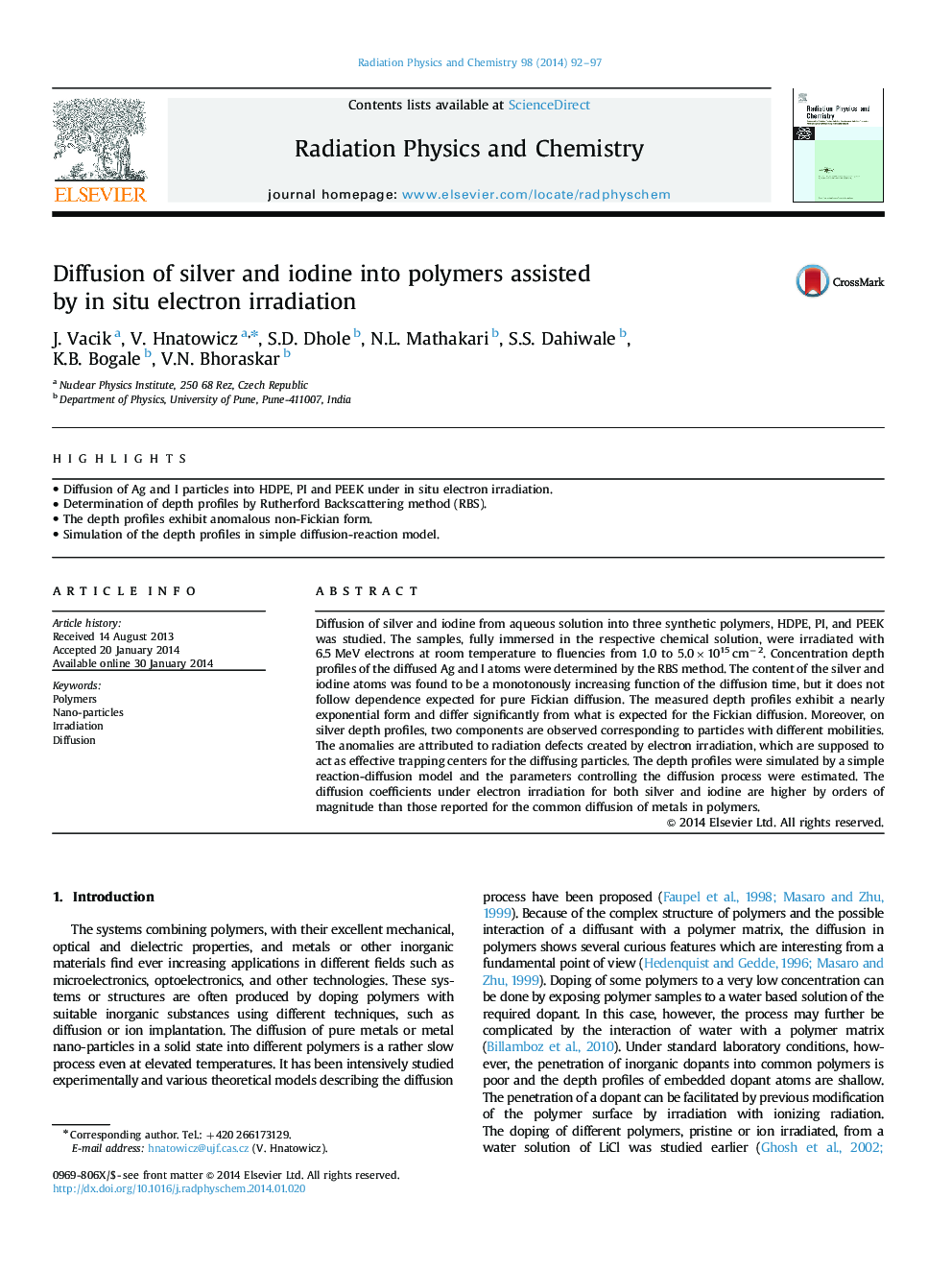| Article ID | Journal | Published Year | Pages | File Type |
|---|---|---|---|---|
| 1886118 | Radiation Physics and Chemistry | 2014 | 6 Pages |
•Diffusion of Ag and I particles into HDPE, PI and PEEK under in situ electron irradiation.•Determination of depth profiles by Rutherford Backscattering method (RBS).•The depth profiles exhibit anomalous non-Fickian form.•Simulation of the depth profiles in simple diffusion-reaction model.
Diffusion of silver and iodine from aqueous solution into three synthetic polymers, HDPE, PI, and PEEK was studied. The samples, fully immersed in the respective chemical solution, were irradiated with 6.5 MeV electrons at room temperature to fluencies from 1.0 to 5.0×1015 cm−2. Concentration depth profiles of the diffused Ag and I atoms were determined by the RBS method. The content of the silver and iodine atoms was found to be a monotonously increasing function of the diffusion time, but it does not follow dependence expected for pure Fickian diffusion. The measured depth profiles exhibit a nearly exponential form and differ significantly from what is expected for the Fickian diffusion. Moreover, on silver depth profiles, two components are observed corresponding to particles with different mobilities. The anomalies are attributed to radiation defects created by electron irradiation, which are supposed to act as effective trapping centers for the diffusing particles. The depth profiles were simulated by a simple reaction-diffusion model and the parameters controlling the diffusion process were estimated. The diffusion coefficients under electron irradiation for both silver and iodine are higher by orders of magnitude than those reported for the common diffusion of metals in polymers.
